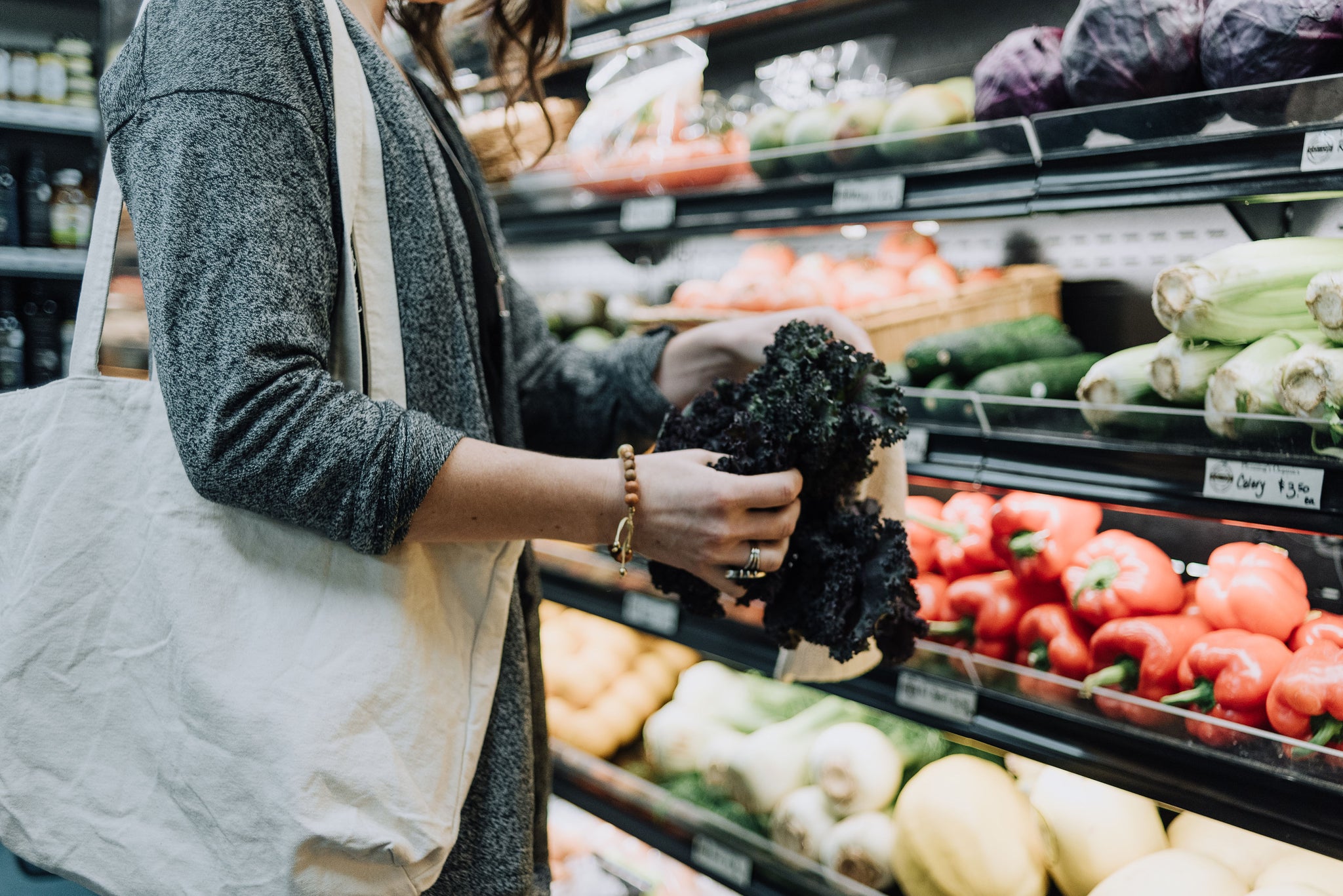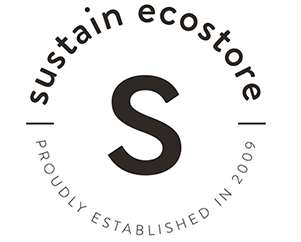Our Guide to Package-Free, Low-Impact Grocery Shopping

Much to our excitement, as owners of a store that teaches how to move toward zero-waste in the home as well as offer the tools that help to do it, more zero-waste grocery stores are popping up, which is giving the movement legs and visibility. That said, at this time they are still few and far between leaving the majority of people to shop at traditional grocery stores. As the zero-waste movement gains momentum (yay!!), more people are interested in trying it out but the reality soon hits that it’s hard to do within a traditional shopping system, leading to frustration and then possibly giving up! We very much understand those challenges!

There is a very real but rarely talked about issue within zero-waste living that involves accessibility—those that live outside of major city centers often have little choice in terms of grocery stores and thus less options to purchase unpackaged goods. But, in any home, the majority of waste is generated in the kitchen, and we all eat three or more times per day—finding a way to reduce the environmental impact that surrounds your food is a vital and impactful way to make a difference. In our own home, we have been working for years to reduce the impact of our food purchases, from plastic to food miles, and have devised a system that helps us do it which we are now sharing with you!
In the past it took a long time to do our weekly shop as the effort to reduce packaging resulted in dozens of micro-decisions that left us exhausted—throw two small kids in the cart and well, lets just say the process was challenging to say the least. With time, however, we kept notes and noticed a pattern, and now the shopping is done quickly, with ease and nearly package-free! Find our method below, and please don’t hesitate to ask questions!

Assemble a zero-waste shopping kit
This doesn’t have to be expensive to do but you will need some basic tools. Our minimum shopping kit includes:
- 4-6 reusable shopping bags
- 1-2 drawstring bulk bags (works for baked goods too) + 1 bag large enough for bread
- 2-4 cotton produce bags + 1 long-handled mesh produce bag (a great multi-tasker)
- 1-2 zippered bags (for cheese, smaller or fine grain items like sugar or flour, or takeout items like muffins or cookies)
- 1-2 glass jars (for wet goods)
- Wax pencil for labelling jars or writing tare weights (note that the pencil won’t work if it or the jar is cold!)


In order to not forget your kit, once you return home and unpackage your items, immediately reassemble the kit and hang it near your purse/car keys, or even on the front door handle so it’s impossible to forget as you leave the house. Store the kit in your car until needed.

At the supermarket
No matter what we’re purchasing, we use the following decision-making process to make choices with the least environmental impact:
- Shop what is in season and learn what stores well. For example, domestic sweet potatoes, potatoes, squash, turnip, carrots and apples are usually possible to find even in winter.
- Unpackaged First—organic when possible, and then:
- Local First
- Domestic Second
- Choose to Refuse overseas imports*
- If packaged:
- Glass
- Metal
- Plastic**
*Canadian winters are harsh, and it can be tough to find certain items domestically (citrus, bananas, avocados, etc.). In this case we look to see if it comes from North America as a worst case. For example, often in the same store we see lemons from the USA as well as from Spain, or onions from the USA or from Chile! Read the labels carefully and choose items that rack up the least amount of food miles.
**If something is only available packaged in plastic look to see what type of plastic it is made of. Number 1 and 2 (harder, more durable types) are most easily recycled and no virgin plastic is required during the re-manufacturing process.


Produce:
- Eliminate plastic produce bags. Our approach is to simply go without and bag them at the checkout, and then use reusable produce bags for delicate items that are easily bruised such as tomatoes, apples, avocados, etc.
- When buying produce, look for options. Often there is both a packaged and an unpackaged version (this is often the case for onions, avocados, oranges, peppers, to name a few).
- Avoid nonessentials that are overpackaged, such as pints of berries imported from halfway across the globe (trust, us, after doing without, the local version will taste that much more amazing in June! Another option would be to buy frozen domestic berries in bulk sizes to reduce packaging).
- There seems to be a correlation between packaging and organic produce—for whatever reason organics are often packaged. This is a frustrating conundrum since supporting organic produce is better for the Earth and our health. Our approach is to always buy the “dirty dozen” organic (packaged or not) and then choose conventional unpackaged food for the rest. It’s not perfect, but it’s a start.



Ask at the deli/fish/meat counter for cheese, meat, fish and olives in your own jar. It's helpful to know the weight of your jar or bag ahead of time.
Ask at the bakery if they have any frozen or unbagged loaves if you buy bread and then use your own bag. If your store has bins with baked goods, buy bagels or other baked goods in bulk and use your own bag, and check and see if they have bulk bins for dry goods like coffee! Often they do for select items.
Sometimes it’s impossible to avoid packaging—first, ask yourself how essential it is. If you can’t do without:
- Get to know your local recycling system so that you know exactly what can and cannot be recycled and make purchases based on this (for example styrofoam trays are generally not recycled, and some districts will not recycle plastic other than hard containers.
- Buy in larger sizes to minimize packaging (family-sized cereals, etc.)
- Eliminate single-use, period, such as water bottles, coffee pods, etc.
Outside of the supermarket:
Here a few additional options we rely on if they are available in your area.
- Farmer Direct—if you eat meat, we have found that purchasing directly from a local farm has been the best way to go. It is usually less expensive and is ordered in bulk, and then conveniently keep it all at home in the freezer! You can request paper wrapping over plastic, and can visit the farm so that you feel comfortable with their practices.
- Bulk Barn Stores—are numerous and now they accept reusable containers provided they are clean. Make a list ahead of time so that you know how many containers you need. We try to rely on bags rather than jars for easy travel (a word to the wise: 1 large Colibri bag empties perfectly into a 1L mason jar at home!). Keep a few glass jars in your kit for wet items like nut butters, oils or honey.
- Independent bakeries for baked goods and bread.
- Co-Op Grocery Stores that focus on local foods.
- Grow Your Own! Even a container with tomatoes or herbs is a start!!

The final piece is that, in our experience, to achieve total zero-waste in the kitchen it is imperative to start making things yourself or be prepared to go without certain things. Some staples that we now make weekly, using ingredients purchased entirely plastic free, are granola, hummus, plant-based milks, crackers, veg/chicken stock, and sometimes bread. And that list is always growing! It's a beautiful opportunity to develop new skills in the kitchen (keep posted for another piece on how to fit these things into your schedule—from one busy parent to another, it's all possible).
Lastly, if you are just starting out on this journey, know that it's a work in progress. It's tough to do all at once but when you have your process down it will be much easier from there. Don't beat yourself up for the occasional slip, it happens to us all. And in saying that, it doesn't have to be all or nothing! Small changes are better than none at all! So, did we miss anything? Or are there specific challenges in your hometown you aren't sure how to resolve? Ask away, we want to help!
A big thank you to Danielle Taylor for the photos (aren't they gorgeous?) and to our beloved North Muskoka Good Food Co-Op for the use of their space. We appreciate you both!



